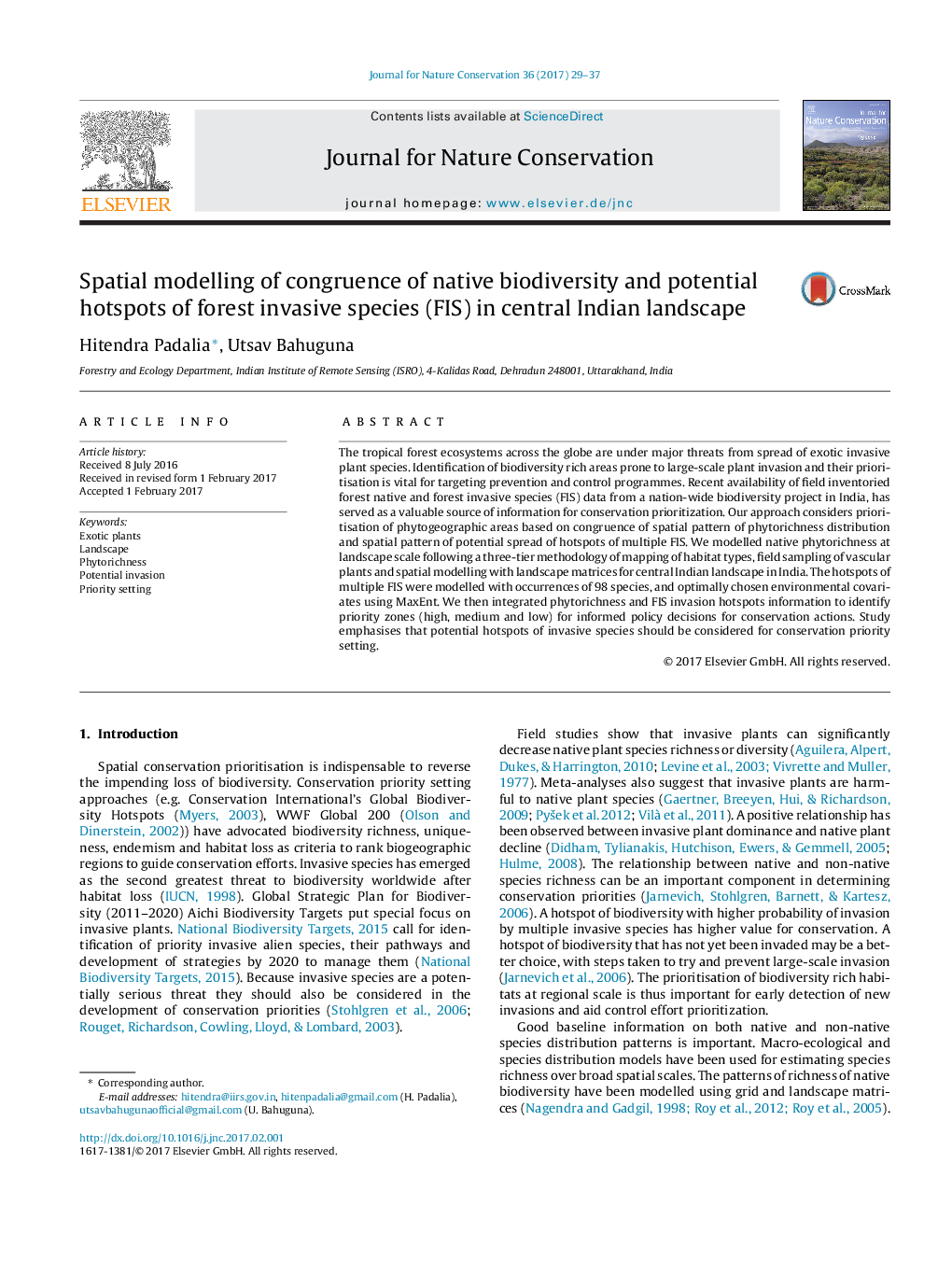| Article ID | Journal | Published Year | Pages | File Type |
|---|---|---|---|---|
| 5744858 | Journal for Nature Conservation | 2017 | 9 Pages |
Abstract
The tropical forest ecosystems across the globe are under major threats from spread of exotic invasive plant species. Identification of biodiversity rich areas prone to large-scale plant invasion and their prioritisation is vital for targeting prevention and control programmes. Recent availability of field inventoried forest native and forest invasive species (FIS) data from a nation-wide biodiversity project in India, has served as a valuable source of information for conservation prioritization. Our approach considers prioritisation of phytogeographic areas based on congruence of spatial pattern of phytorichness distribution and spatial pattern of potential spread of hotspots of multiple FIS. We modelled native phytorichness at landscape scale following a three-tier methodology of mapping of habitat types, field sampling of vascular plants and spatial modelling with landscape matrices for central Indian landscape in India. The hotspots of multiple FIS were modelled with occurrences of 98 species, and optimally chosen environmental covariates using MaxEnt. We then integrated phytorichness and FIS invasion hotspots information to identify priority zones (high, medium and low) for informed policy decisions for conservation actions. Study emphasises that potential hotspots of invasive species should be considered for conservation priority setting.
Related Topics
Physical Sciences and Engineering
Earth and Planetary Sciences
Earth and Planetary Sciences (General)
Authors
Hitendra Padalia, Utsav Bahuguna,
